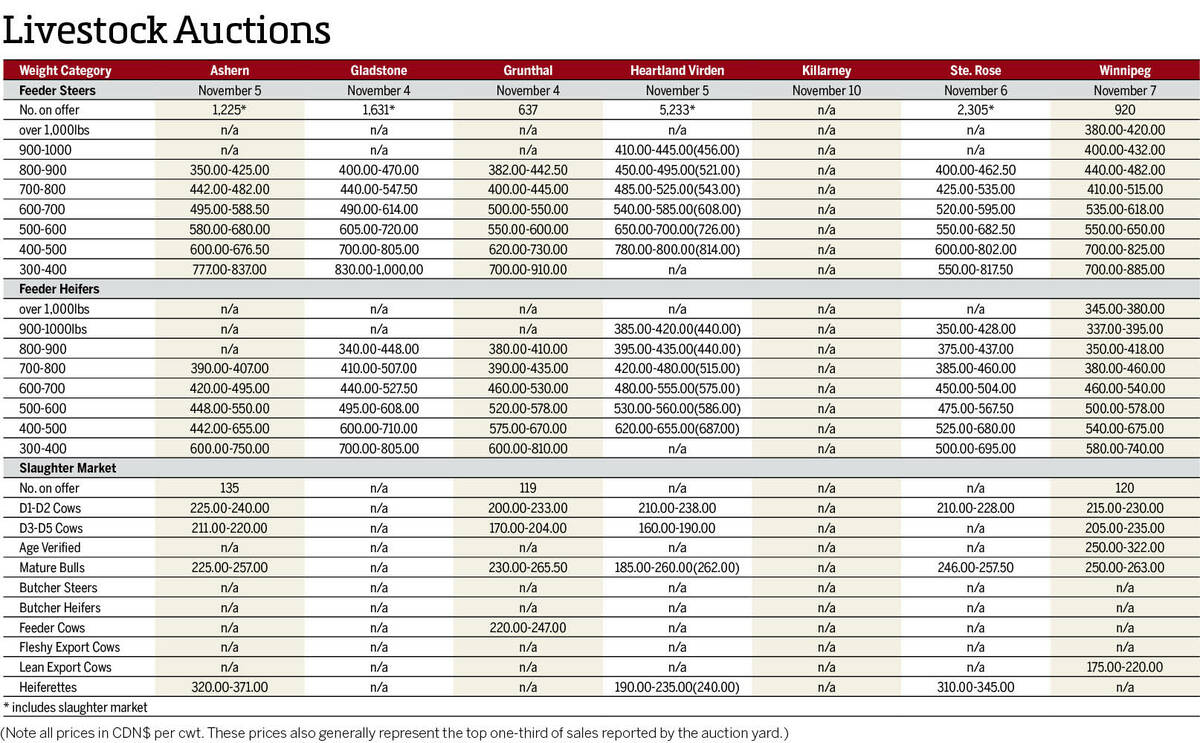Canola contracts on the ICE Futures platform hit fresh contract lows every day during the week ended May 3, with little supportive news to slow the drop.
The most active July contract lost $14 per tonne over the course of the week, to settle at $432.60 per tonne on May 6. New-crop November lost a similar amount, closing at $446.90 per tonne. While chart signals are looking decidedly oversold, more losses are likely given the underlying bearish fundamentals.
A move to the psychological $400-per-tonne mark in the front-month contract is a possibility going forward, barring a bullish spark.
Read Also

Manitoba cattle prices – Nov. 10
Cattle prices from Manitoba’s major auction marts for the week of Nov. 4-10.
The trade standstill with China remained front and centre of the canola market, with no substantial headway made during the week. While the federal government announced increased financial aid to canola farmers in the form of expansions to the Advance Payments Program, the move did nothing to address the root problems with China. Efforts to diversify to other markets that were also announced could be supportive in the long run, but also did little for the current situation.
Weekly canola exports did show some improvement in the Canadian Grain Commission numbers for the week ended April 28, but the overall export pace is still running about 800,000 tonnes behind the year-ago level. That slow export pace means old-crop supplies will still be very large when the 2019-20 crop is harvested, exaggerating the burdensome supply situation in the fall.
While all of the negative news is likely cutting into some canola acres, rotational issues and the lack of alternatives should limit any major shift away from the crop.
In the United States, soybeans also lost ground during the week with some of the declines there tied to expectations that poor Midwestern seeding weather will see some intended corn area shift into soybeans.
The lack of significant progress on U.S./China trade talks also weighed on soybean values, with tweets on May 5 from U.S. President Donald Trump, threatening to raise tariffs on China, heightening the tensions to start the next week.
The slow U.S. seeding pace kept corn well supported during the week, before the renewed concerns over Chinese trade brought on by Trump’s weekend tweets sent values down on May 6.
For wheat, all three U.S. markets fell to contract lows during the week before uncovering some bargain-hunting support. Large world supplies and relatively favourable conditions for the U.S. winter wheat crop accounted for much of the selling pressure.
Spring wheat seeding delays were somewhat supportive for the Minneapolis futures, but the good prospects in other wheatgrowing regions of the world limited those concerns.
















